Traditional Welsh Cakes
This post may contain affiliate links. See my disclosure policy.
Unforgettably flaky, tender, almost melt-in-your-mouth texture that’s punctuated with sweet currants and laced with a wonderful hint of mace, these Welsh cakes are simply irresistible! A thoroughly authentic Welsh Cakes recipe from generations past.
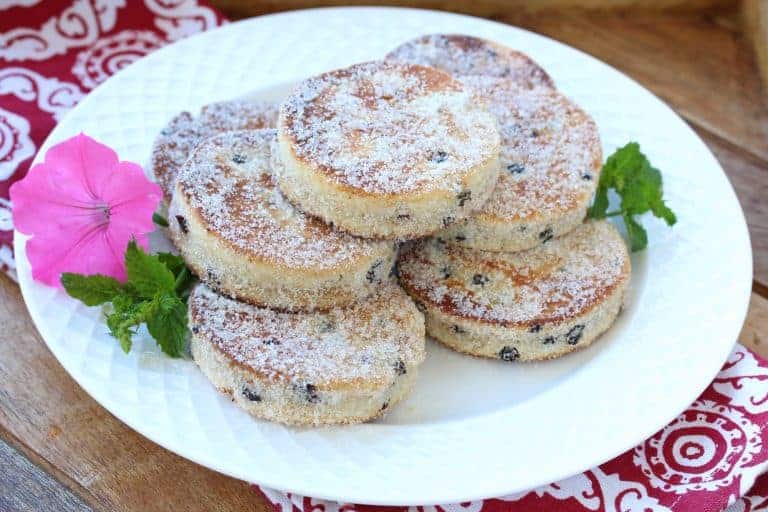
What Are Welsh Cakes?
Welsh cakes, also known as bakestones or “picau ar y maen” in the Welsh language, are popular, traditional Welsh baked goods that are flat, round, and resemble griddle scones. They are traditionally made from flour, lard, sugar, and dried currants and often a hint of warming spices like cinnamon and mace. They’re cooked on a griddle or heavy skillet which gives them their characteristic slightly crispy exterior while keeping the interior soft and meltingly tender. Once cooked they’re coated in sugar and served warm. An important and beloved part of Welsh culinary heritage, Welsh cakes are enjoyed as an everyday treat or served on special occasions like St. David’s Day.
A Brief Introduction to Wales
Before we get to the recipe, let’s talk just briefly about the beautiful country that is home to these delicious Welsh Cakes. Wales is a breathtakingly scenic country with mountainous national parks, glacial landforms, rugged coastlines, some of the most striking fortresses in the world, picturesque villages, and steeped in a rich Celtic culture.
And then of course there is the Welsh language which is near maddening to anyone who can’t speak it (99.999% of the world). Yet even the mind-boggling, tongue-twisting language is an endearing aspect of this beautiful country.

I visited Wales regularly during the 6 years I lived in England and my husband also lived in Wales for nearly a year as a young adult. There’s a small village in Wales that has the longest place name in the UK and second longest in the world. Todd prides himself in being able to say the name, all 58 letters, at break-neck speed and without even the slightest hiccup: Llanfairpwllgwyngyllgogerychwyrndrobwllllantysiliogogogoch.
And just in case you don’t believe me, we visited the village this Summer and I took a picture of the sign:
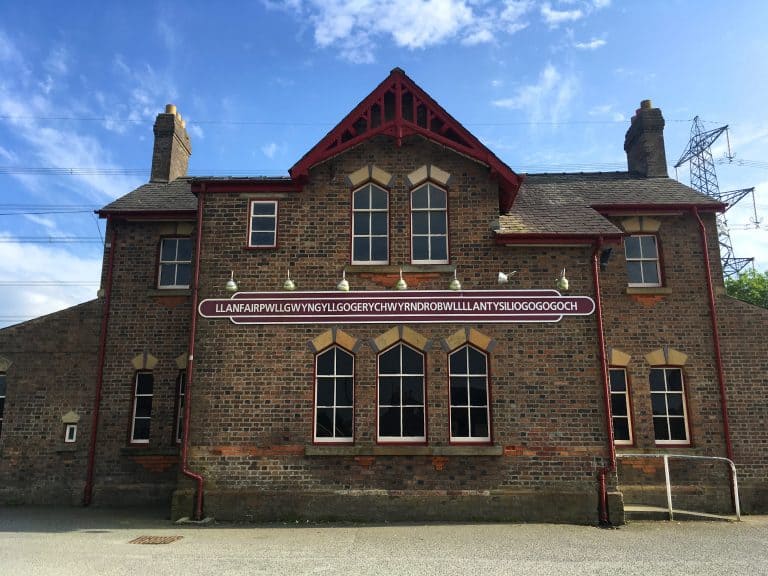
So you have these charming quirks in Wales and then you also have the jaw-dropping, awe-inspiring landscapes and architecture. Todd and I both absolutely love Wales and just got back from a recent vacation there with our kids, focusing this time on North Wales. Here are just few representative pictures of the area.
Below left: The Great Orme. Below right (top and bottom): Snowdonia National Park.

Below are a few of Wales’ most striking and famous castles, all built by Edward I in the 13th century.
Below top left: Caernarfon Castle, where historically the Prince of Wales was crowned and that tradition was resumed with Prince Charles. Below top right: View from Harlech Castle.
Below bottom left: Beaumaris Castle, considered the finest textbook example concentric castle design in the world. Below bottom right: Harlech Castle, also considered an example of the finest medieval castle designs in the world.

Below: Conwy Castle, considered one of the finest defensive castle designs in the world.

The Killebrew’s at Beaumaris Castle.
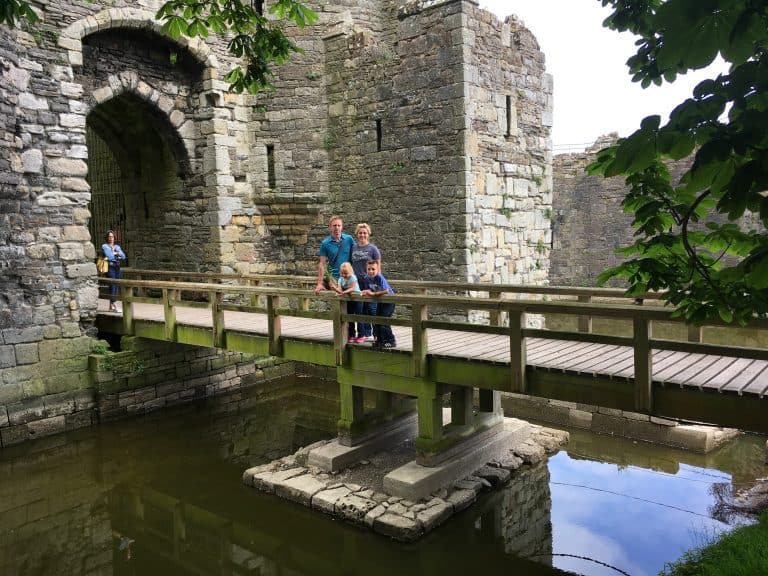
Wales also has a special place in my heart because it’s home to many of my ancestors. My great grandparents on my father’s maternal side were from South Wales and I also have a long line Welsh ancestry in North Wales that goes back to Roman times.
It was my great-grandparents, the Thomas Family from Glamorganshire, Wales, who immigrated to the United States, to Utah, in the late 19th century.
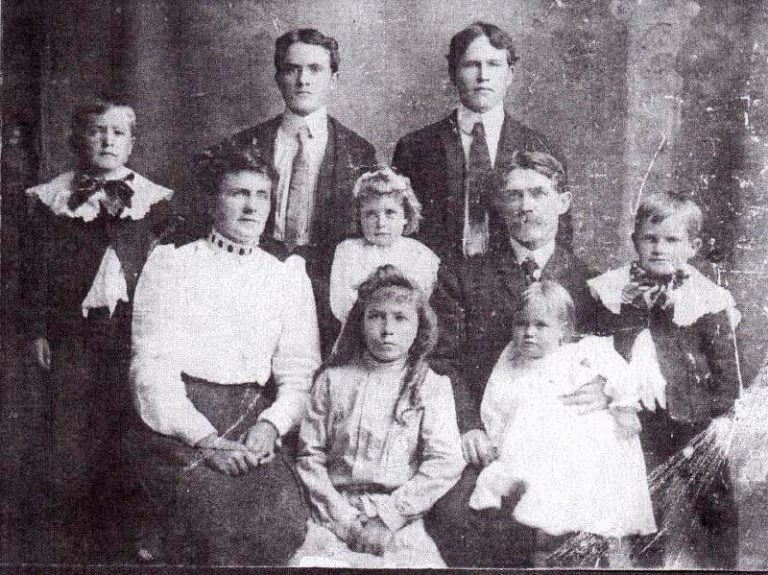
I’ve always wished some of my great grandmothers would have left some journals or recipes to pass down. What a treasure that would be! Nevertheless, I like to imagine my Welsh great-grandmother, Dinah, making these Welsh cakes in her kitchen and her children enjoying them hot off the griddle and dusted in sugar.
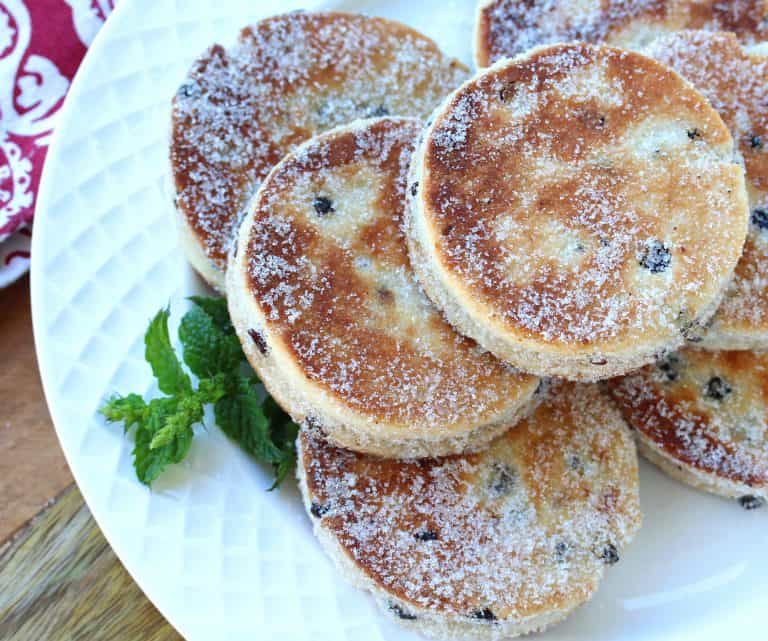
So in honor of the beautiful country of Wales and my Welsh heritage, I’m sharing a very authentic recipe for traditional Welsh Cakes. In Wales these are also known as “bakestones” because traditionally they were cooked on a bakestone which is a cast iron griddle that was placed on the fire or stovetop.
If you’ve never had Welsh Cakes before, I think you’ll agree once you try them that they’re quite different from anything you’ve had before. With their unforgettably flaky, tender, almost melt-in-your-mouth texture that’s punctuated with sweet currants and laced with a wonderful hint of mace, Welsh cakes are simply irresistible.
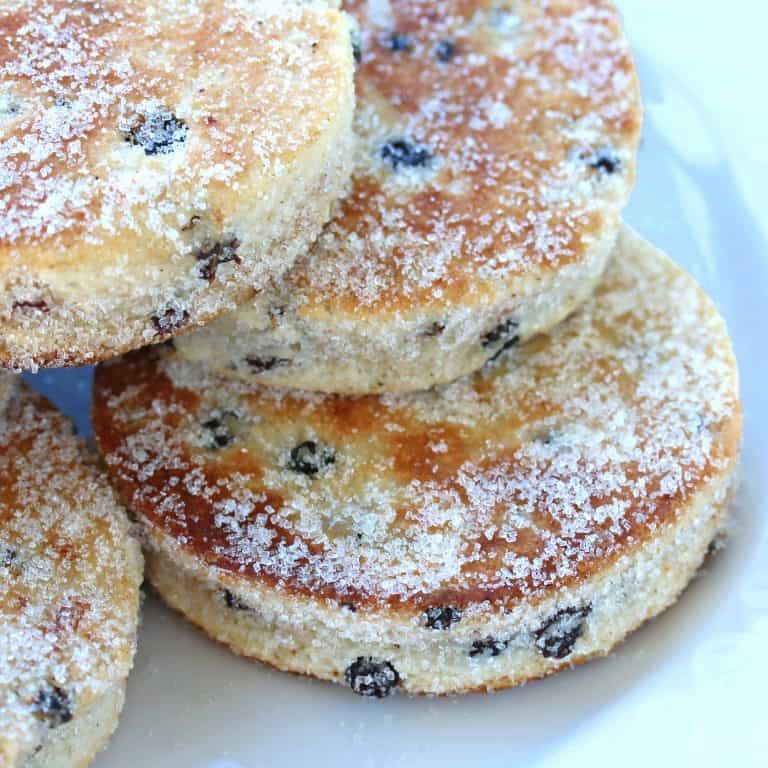
And if you have had Welsh cakes before but your opinion (whether or good or bad) is based solely on store-bought ones, set that opinion aside because I promise you you’ll form a whole new opinion once you’ve tried homemade ones. I’ve had store-bought Welsh cakes on a couple of occasions and I don’t care for them.
But…HOMEMADE…that’s an entirely different story. I am IN LOVE with these traditional homemade Welsh cakes!! Let me say it again: NOTHING compares to the traditional homemade version of these cakes using real lard and mace! They are FABULOUS. Just trust me on this enough to give them a try.
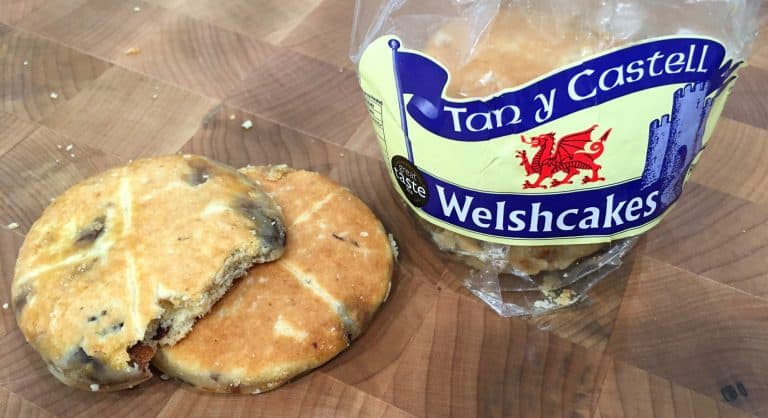
How to Make Welsh Cakes
Use lard. Do not substitute with additional butter. Lard makes ALL the difference in the texture. I repeat: Lard makes ALL the difference in the texture. I highly recommend making your own lard – it’s super easy! Learn How to Make Lard.
Use dried currants. In spite of their name, they’re actually not dried currants at all but rather a variety of raisin known as zante raisins. They’re much smaller than regular raisins, not as cloyingly sweet, and are firmer in texture (regular raisins will be too large and too mushy in these). Dried currants are a staple in traditional British baking and a must for making Welsh cakes.
Use mace. Don’t substitute nutmeg. Mace is a wonderfully aromatic and flavorful spice that was commonly used generations ago but is unfortunately less common today. Its really adds a special and nostalgic touch of old-fashioned flavor.
Use caster sugar. This is also critical for the texture. Since these Welsh cakes are cooked pretty quickly, regular granulated sugar will not have time to dissolve and the texture will be grittier as opposed to that smooth, almost melt-in-your mouth consistency we’re after. Caster sugar is ultra-fine sugar and dissolves very quickly. You can buy caster sugar or very simply make your own by running regular sugar through the blender until very fine. Do NOT use powdered sugar – it contains cornstarch and is not the same thing.
Traditional Welsh Cakes Recipe
Let’s get started!
In a bowl combine the flour, sugar, baking powder, salt, mace and cinnamon. Mix in the lard and butter using your fingers or a food processor until the mixture resembles coarse crumbs.
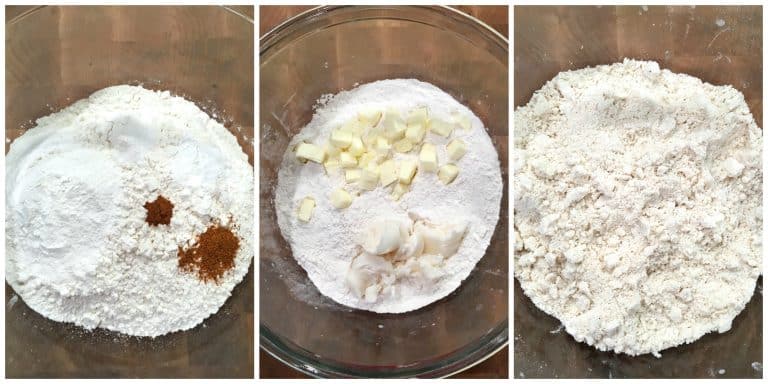
Add the currants and stir to combine. Add the beaten egg and work it into the mixture adding a little milk as needed until you have a soft dough. It should not be wet or sticky.
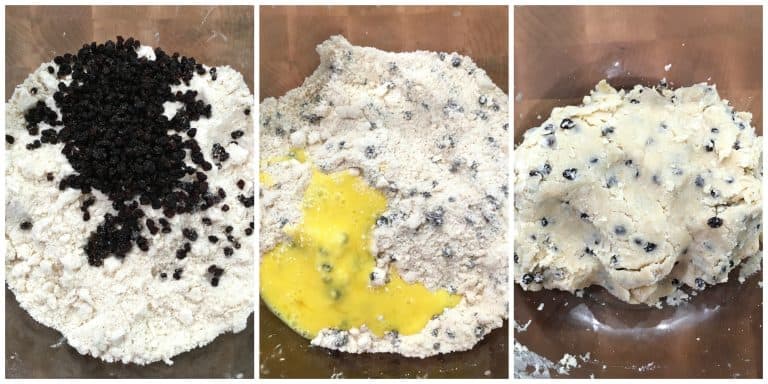
Wrap the dough and refrigerate for 30 minutes. (Dough can be made well in advance and chilled until ready to use.)
Roll the dough out onto a floured or non-stick surface about 1/4 inch thick. Cut out rounds using a biscuit cutter.
Gather up the scraps, knead together and roll out again to cut the remaining rounds.
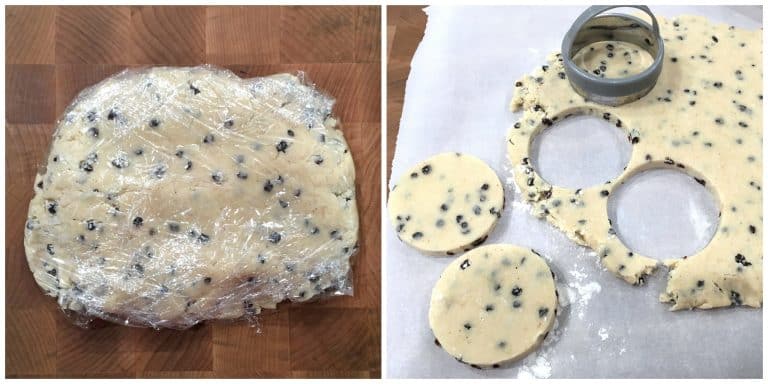
Heat and lightly butter a cast iron pan over medium heat. (I use and love my Lodge cast iron pan for these Welsh Cakes.)
Add the cakes and cook on each side until lightly browned, about 3-4 minutes (lower the heat if needed to prevent the outside from burning before the interior is done).
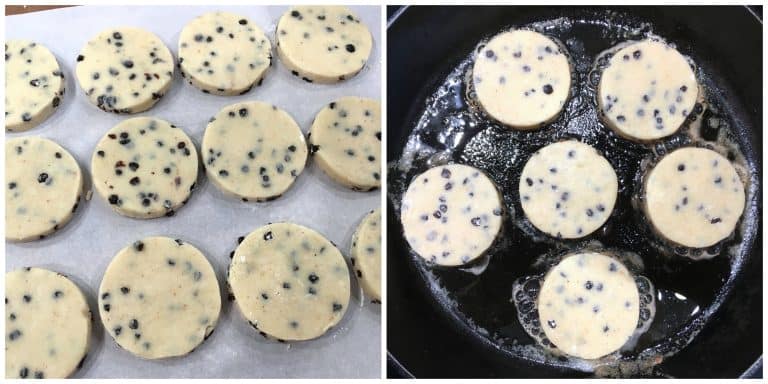
Once the Welsh cakes are done, remove them from the pan and let them cool for a minute.
While the Welsh cakes are still warm, place them in a small bowl of sugar to coat all sides.
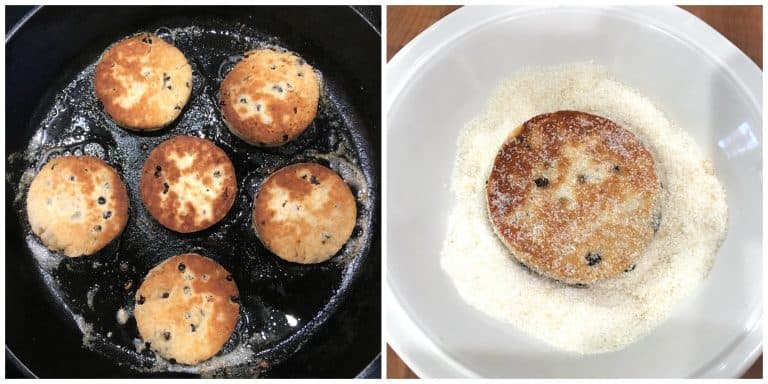
Best eaten while a little warm. Reheat Welsh Cakes in a pan, toaster, or warmed oven (or if in a hurry, in the microwave for a few seconds).
Enjoy!
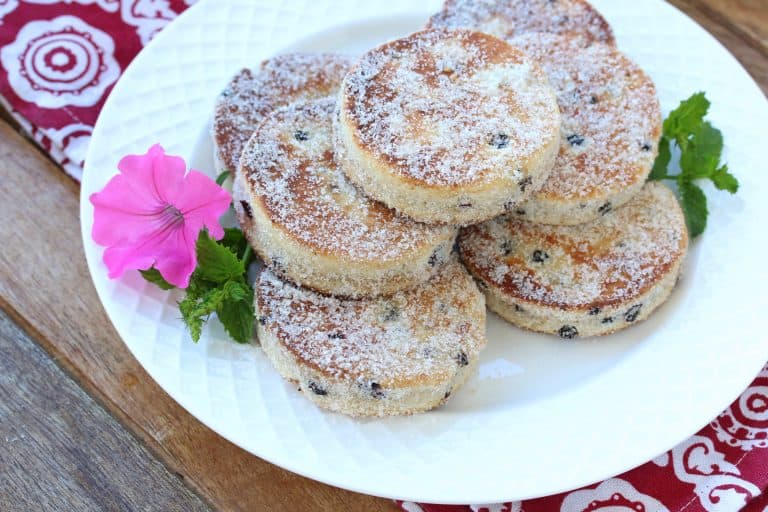
For more traditional Welsh and British bakes be sure to try my:
- Bara Brith
- Treacle Tart
- Sticky Toffee Pudding
- Spotted Dick
- Chelsea Buns
- Cornish Fairings
- Victoria Sponge Cake
- Hot Cross Buns
- Mince Pies
- Lardy Cake
- Scottish Shortbread
- Flapjacks
- Parkin
- Eccles Cakes
- Crumpets
Save This Recipe
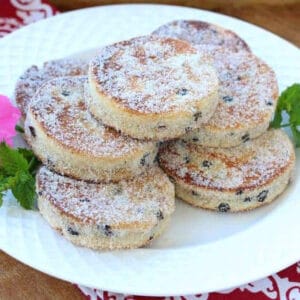
Traditional Welsh Cakes
Ingredients
- 2 cups all-purpose flour
- 1/3 cup caster sugar (do not substitute) (to make your own, pulse granulated sugar in a blender until ultra fine. Do NOT use powdered sugar)
- 1 teaspoon baking powder
- 1/2 teaspoon ground mace ,(a highly fragrant, flavorful spice used in a lot of traditional baking. STRONGLY recommended but can substitute nutmeg if necessary)
- 1/4 teaspoon salt
- 1/8 teaspoon ground cinnamon
- 2 ounces lard , chilled (about 4 tablespoons) NOTE: Lard is critical for the wonderful texture of Welsh Cakes
- How To Render Your Own Lard! (it’s WAY cheaper and better)
- 2 ounces butter , chilled and cubed
- 1 large egg , lightly beaten
- 1/2 cup dried currants
- 2-3 tablespoons milk
- granulated sugar for finished cakes
Instructions
- In a bowl combine the flour, sugar, baking powder, salt, mace and cinnamon. Mix in the lard and butter using your fingers or a food processor until the mixture resembles coarse crumbs. Add the currants and stir to combine. Add the beaten egg and work it into the mixture adding a little milk as needed until you have a soft dough. It should not be wet or sticky. Wrap the dough and refrigerate for 30 minutes. (Dough can be made well in advance and chilled until ready to use.)
- Roll the dough out onto a floured or non-stick surface about 1/4 inch thick. Cut out rounds using a biscuit cutter. Gather up the scraps, knead together and roll out again to cut the remaining rounds.
- Heat and lightly butter a cast iron pan over medium heat (I lightly butter it to later help the sugar adhere to the cakes when they’re sprinkled). Add the cakes and cook on each side until lightly browned, about 3-4 minutes (lower the heat if needed to prevent the outside from burning before the interior is done).
- Let them cool for about a minute. While the Welsh cakes are still warm, place them in a small bowl of sugar to coat all sides. Best eaten while a little warm. Reheat Welsh Cakes in a pan, toaster, or warmed oven (or if in a hurry, in the microwave for a few seconds).
Nutrition
Originally published on The Daring Gourmet October 30, 2018



















Can I make these with schmaltz rather than lard? I don’t eat anything pig but these cakes look.veey yummy.
Hi Patricia, yes you can use schmaltz, it will just have a stronger flavor.
FYI, Schmalz is rendered pig fat.
Schmalz is rendered chicken or goose fat.
Nope, generally chicken, or other poultry. But never pig
Same here, we keep kosher, going to use a palm shortening, it’s fairly hard at room temp, should be a good sub..
Want to make these but confused?
First being told not to subsitute lard with additional butter and then
Their you went and dun and did it! You added butter!
Hi Harold, it says do not substitute lard with “additional” butter, meaning don’t replace ALL of the lard with butter. I recommend using half and half as directed in the recipe.
Today I tried this recipe and it’s a keeper. They smelled divine while I was baking them and tasted amazing.The sweet smell of mace and the hint of cinnamon,paired so well with the currants.They came out light as a feather,very tender and flaky. We had tea this afternoon and my family polished them off in a flash.Thank you for sharing this recipe with step by step instructions. I will be making them again soon.
I’m so happy everyone enjoyed them, Laurieann, thank you!
It’s really a good companion with the tea, you really explained well.
I have been looking for a recipe for these for a very long time. Others did not look like the ones my grandmother made, but these are exactly like hers. She has been gone for over 40 years. I can’t wait to try making them. I have her hand written recipe but the instructions were the bare minimum.
That sounds very hopeful, Linda, and I hope these measure up to your memory of your grandmother’s Welsh cakes. Please let us know what you think when you’ve tried them!
Thanks for sharing this recipe. I made these yesterday and they taste like the ones the Methodist women sell at street fairs here in the US, which is to say, very good. However, I expected more flavor from the mace, which was bought fresh the same day, and which is expensive for such a small container. I believe the first batch I ever made used all butter and nutmeg, and I must say, I preferred the extra butteriness.
I was born and raised a few miles from Cardiff, now living in Mass. I like to try out different recipes. This one was pretty good. I substituted vegetable shortening for the lard, and alas, no mace. Zante raisins are a good alternative for currants.
One thing I find is that it is always hard to get the exterior that perfect golden brown and also get a well-cooked interior. So i set the nearby toaster oven to 325 deg f and transfer the cakes from the griddle to the oven for a few minutes to cook through. Just break and sample the first few cakes to get the timing right. Too long on the oven and they dry out.
Kimberley your recipe is very similar to the Welsh cakes my Nain made for me when I was a child. She preferred Nutmeg over Mace but that is personal preference. I do not have an iron pan to cook these in. It this a problem? I do have an iron pan that is coated with ceramic. Would this work as well if I buttered the pan well. Or should I use a normal frying pan?
I can still hear my Nain say ” if you dont use currants they are not Welsh Cakes”!!! My father was born and raised in North Wales and spoke the Welsh language fluently and could pronounce the name of that sweet town without taking a breath. Thank you for this wonderful recipe. I had lost Nain’s recipe years ago and yours is a perfect replica!!!
Thank you for sharing, Caroline, I hope these Welsh cakes bring back many warm memories for you. You can use either of those pans – you can experiment and see which one works best. Happy cooking! :)
Excellent :-) thanks
Wow. My tummy is rumbling reading this recipe!
My gluten free child and has begged me to make these for her Eisteddfod competition. (I’m Irish and have never baked a welsh cake before!)
By the sounds of the recipe and reviews, she’s definitely going to want to taste one…
…Can these be made gluten free? Doves GF flour maybe?
Hi Cliona, your daughter has great taste – these are a perfect way to celebrate the Eisteddfod competition :) I haven’t tried making these with GF flour but theoretically it should work fine using any GF flour blend as a direct substitute, Doves included.
Caster sugar IS powdered sugar and yes you can substitute….They actually taste better without it :)
They’re not the same thing, Shannon. For one, they have a different texture – caster sugar is not nearly as fine as powdered sugar (finely ground versus “powder”). Also, at least in the U.S., powdered sugar (aka confectioner’s sugar) also has cornstarch in it.
It is NOT the same. And just for your FYI, it’s called Caster Sugar because there used to be a sugar shaker (Caster) as part part of a condiment set that was used at the table to shower your dessert or whatever with sugar.
The sugar is called Caster Sugar because it was fine enough to go through the holes in the caster. We had one when I was a child, it was hardly ever used except for pancakes (crepes) on Shrove Tuesday.
More info:
https://en.wikipedia.org/wiki/Sugar_caster
I sometimes have shop bought Welsh cakes for breakfast, I’ve never had an issue with the taste either cold or reheated. But occasionally I do like to put chocolate spread (e.g. Nutella) on them, they’re amazing that way. Next time you can buy Welsh cakes when it comes to eating them try them with chocolate spread on top
I took your recipe to Lynton, England, mid-September so that I would have a tea-time treat after we came back from out lovely coastal walks.
I used lard and mace and caster sugar and currants (bought in Lynton, and they turned out so well.
The big bonus was, since you said to refrigerate them ahead, was that I simply rolled out enough dough each day for three cakes. The recipe lasted me the whole week we were there. The cakes tasted as good at the end as at the beginning. Thank you so much.
What a terrific idea, Peggy, and I’m so glad you enjoyed them, thank you!
Wow these Welsh cakes recipe is so yummy we can’t stop eating , the lard gives that melt in the mouth quality. This is the recipe I been using in the last 5 months and even my neighbours can’t get enough. Thank for publishing this most delectable recipe. What a Gem!
I’m so thrilled to hear that, Daniela, thank you!
I am about to make these cakes! Will let you know how I like them! Hers were light as feathers and melted in your mouth! Excited! Thank you so much!
I am looking for an authentic welsh recipe for Maid of Honors my Auntie Pol used to make. I lost her recipe when our home burned down and would so love to have a recipe! The pastry melted in your mouth and she filled with very finely grated coconut and lemon curd filling , plus strawberry or whatever else but they are unbelievable. Can anyone help me!
Another thing is for a recipe for making fresh mustard using Coleman’s dry mustard. Water does not make it taste like hers! HELP>>>>>PLEASE!!!!!!!
.